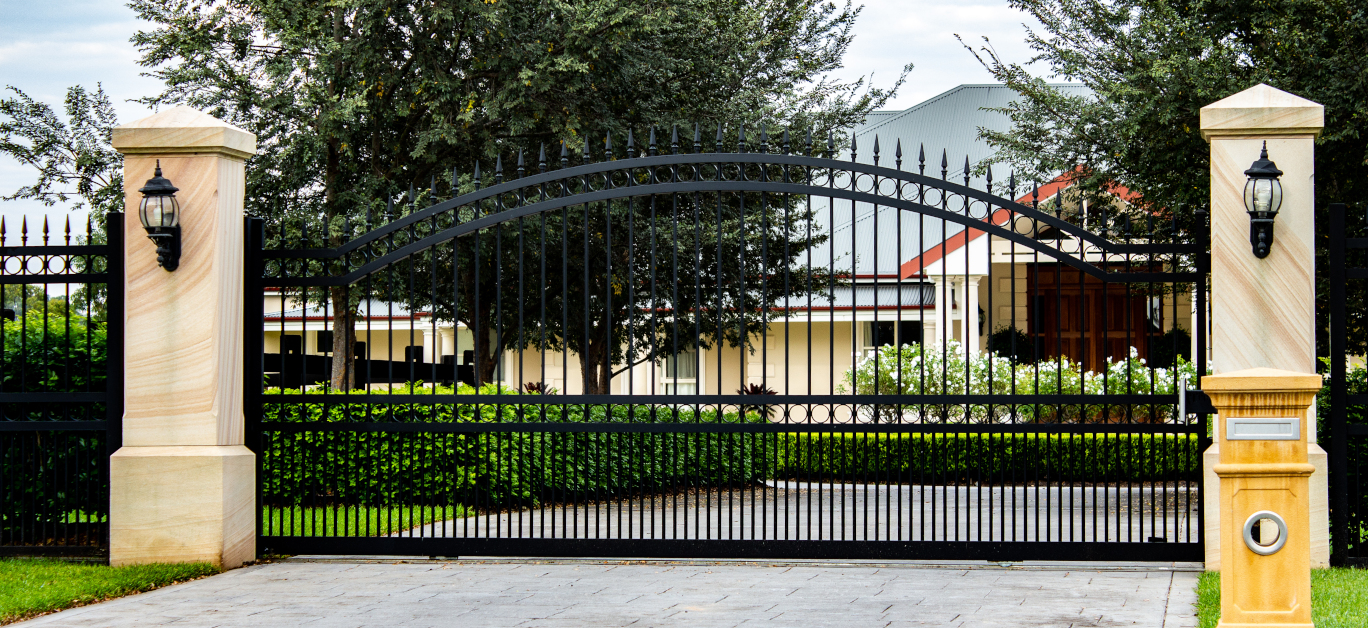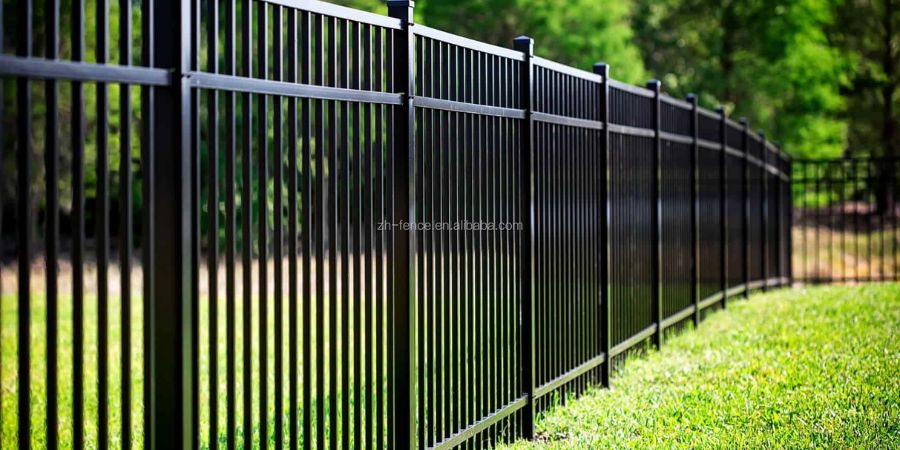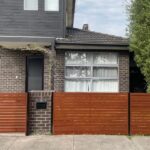
The cost of installing a metal fence can vary widely depending on various factors. While it is difficult to provide an exact cost without specific project details, it’s important to consider these factors and consult with fencing professionals to obtain accurate estimates. By understanding these cost factors and planning accordingly, you can make informed decisions and ensure a successful metal fence installation within your budget.
What is a Metal Fence?
A metal fence is a type of fence made primarily or entirely from metal materials such as steel, aluminum, or wrought iron. It is a popular choice for residential, commercial, and industrial applications due to its durability, strength, and security features. Metal fences can be designed in various styles and configurations, offering both aesthetic appeal and functional purposes.
Pros of Metal Fences
Durability
Metal fences are known for their long-lasting durability. They can withstand harsh weather conditions, including strong winds, heavy rain, and extreme temperatures, without warping or deteriorating.
Security
Metal fences provide excellent security for properties. They are difficult to climb over or break through, acting as a deterrent to intruders and providing a sense of safety.
Strength
Metal fences are sturdy and robust, making them suitable for high-traffic areas or properties that require extra protection. They can resist impacts and provide a solid barrier.
Low Maintenance
Metal fences generally require minimal maintenance. They do not need to be repainted or stained regularly, and they are resistant to rot, pests, and decay.
Versatility
Metal fences offer versatility in terms of design and style. They can be customized to match various architectural styles and preferences, allowing for a wide range of options to suit different aesthetics.
Cons of Metal Fences

Cost
Metal fences can be more expensive compared to other fencing materials, such as wood or vinyl. The cost can vary depending on the type of metal used, the design complexity, and the size of the project.
Heat Absorption
Metal fences can absorb heat from the sun, which may make them hot to the touch in extreme weather conditions. This can be a concern, especially for properties in sunny climates.
Rust and Corrosion
While some metal fences are treated or coated to resist rust and corrosion, over time, exposure to moisture and environmental elements can cause these fences to develop rust or corrosion. Regular maintenance and occasional touch-ups may be required to prevent or address these issues.
Conductivity
Metal fences are conductive materials, which means they can conduct electricity. This can be a safety concern if the fence comes into contact with electrical wires or during thunderstorms.
Limited Privacy
Depending on the design and configuration, metal fences may offer limited privacy compared to other fence types. Gaps between metal pickets or rails may allow visibility from the outside.
It’s important to consider these pros and cons when deciding whether a metal fence is the right choice for your specific needs and preferences.
Factors Affecting the Cost of Metal Fence
The cost of installing a metal fence can vary depending on several factors. Factors such as the choice of materials, intricacy of design, and the complexity of the installation can significantly impact the overall cost. It’s important to consider these factors and plan accordingly to ensure a successful and cost-effective metal fence installation.
Variety of Metal Types
The type of metal used significantly impacts the cost of your fencing project. Designs with intricate details or using more material will naturally incur higher costs compared to simpler options such as corrugated metal. Common metal fence types include:
Steel Fences
Corrugated: $20–$30 per linear foot
Picket: $40–$70 per linear foot
Privacy: $30–$70 per linear foot
Read more: Best Service about Steel Fencing & Gates in Melbourne
Aluminum Fences
Flat top: $25–$40 per linear foot
Spear top: $30–$50 per linear foot
Split rail: $20–$40 per linear foot
Read more: Aluminum Fencing: What You Need to Know
Wrought Iron Fences
Plain iron: $25–$35 per linear foot
Galvanized iron: $40–$90 per linear foot
Ornamental iron additions: $30–$100 per linear foot
Read more: Which is Better: PVC Fence or Aluminium Fence?
Size
The linear footage of the fencing required is a crucial factor in determining the overall cost. While there may be cost savings with larger projects due to economies of scale, significant reductions typically occur only with extensive fencing installations.
Materials
Metal fences are commonly constructed from chain link, steel, aluminum, or wrought iron. While steel and aluminum exhibit comparable pricing, wrought iron comes at a premium due to its intensive refining process, resulting in higher costs.
Labor
Skilled labor costs for installing metal fences range between $6 and $30 per linear foot. This includes delivery of materials, specialized expertise, and assurance of high-quality workmanship. Contractors typically quote labor costs on an hourly basis, averaging between $40 and $90 per hour.
Preparation
Preparation for fence installation includes surveys to assess soil strength and identification of underground utility lines. Damaging utility lines can incur substantial repair costs, averaging around $24,400, and pose safety hazards, particularly with electric or high-pressure lines.
Landscaping and Grading
Landscaping expenses, ranging from $5 to $14 per square foot, may be necessary for properties requiring extensive grading or removal of obstacles such as boulders or stumps. Large-scale landscaping is more common for expansive properties like ranches or undeveloped land.
Permits
Securing permits is essential to avoid penalties and ensure compliance with local regulations. Permit costs for metal fence installations typically range from $50 to $900, depending on the jurisdiction.
Gates
Gate installation costs vary widely depending on style and material, ranging from $150 to $3,000. Automatic driveway gates entail higher expenses compared to simple swinging gates, and coordinating gate installation with fence construction may offer cost-saving opportunities.
How to Reduce Costs While Installing a Metal Fence

Reducing costs while installing a metal fence can be done through various ways. Apart from labor and materials, there are additional creative ways to save money. Consider the following tips:
Plan the fence layout on simple terrain
Installing a metal fence on flat and straightforward terrain can save on excavation and leveling costs. Complex or uneven terrains may require additional work and materials, increasing the overall cost.
Shop for fencing sales
Keep an eye out for sales and discounts offered by fencing suppliers or manufacturers. Timing your purchase during promotional periods or seeking out clearance sales can help you secure materials at a lower cost.
Use recycled materials
Consider using recycled metal materials for your fence. This can include salvaged metal panels or repurposing metal from other sources. Not only is this an environmentally friendly option, but it can also be more cost-effective compared to purchasing new materials.
Simplified gate design or ornamentation
Gates can contribute significantly to the overall cost of a metal fence. Opting for a simpler gate design or minimizing ornamental features can help reduce expenses. Focus on functionality rather than elaborate designs to keep costs in check.
Source locally to cut transport costs
Choosing local suppliers for your materials can help reduce transportation expenses. Local sourcing eliminates or minimizes long-distance shipping fees and can often provide more competitive pricing.
Plan around areas that already require landscaping
If you have planned landscaping or grading work for your property, consider coordinating the fence installation with these existing projects. This can help streamline the overall process and potentially reduce costs by combining efforts.
Remember, while cost-saving measures can be beneficial, it’s essential to maintain a balance between cost and quality. Ensure that any cost-cutting strategies align with your specific needs and priorities for the fence installation project. Additionally, it’s crucial to comply with local regulations and obtain necessary permits to avoid potential penalties or additional expenses.
Conclusion
The cost of installing a metal fence is influenced by several factors that should be considered when planning your project. The type of metal, size of the project, labor costs, additional materials like gates, and any necessary preparation work all contribute to the overall cost. By understanding these factors and seeking estimates from fencing professionals, you can make informed decisions and budget accordingly. While the cost may vary, a well-designed and properly installed metal fence can provide durability, security, and aesthetic appeal to your property.





